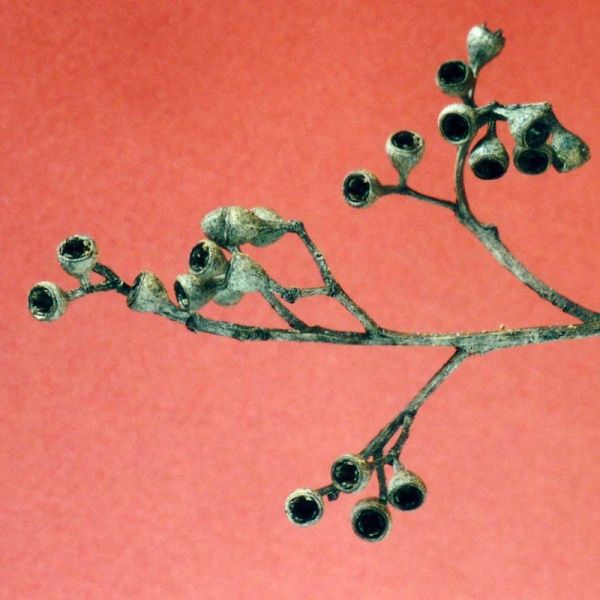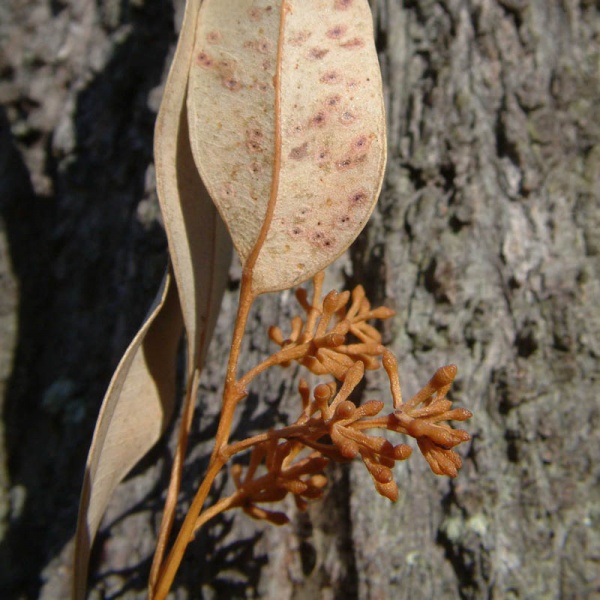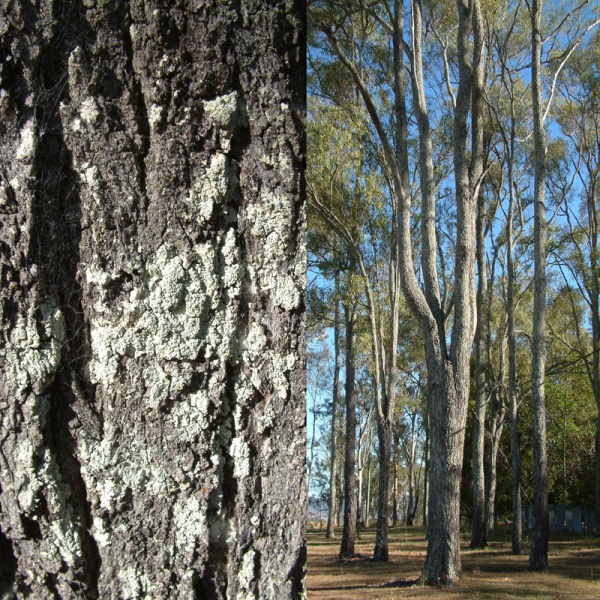Scientific Name: Eucalyptus crebra
-
Pronunciation:you-cal-LIPT-us CREB-rah
-
Common Name:Narrow-leaved Ironbark



-
Derivation:Eucalyptus: Gr. eu - well, kalyptos - covered (refers to bud cap) crebra: L. crebra - abundant, frequent. (Most commonly encountered ironbark)
-
Type:
-
Family:MYRTACEAE
-
Flowers:White, in terminal panicles or racemes of 4-9 flowered umbels.
-
Fruit:Capsule small
-
Vegetation Type:Dry Eucalypt Forest on poor sites. Found on high ridges and slopes on stony soils to medium heavy clays, inland from coast
-
Species List:Bush food, Bush medicine, Eucalypt Forest Trees, RE 12.8.24. RE 12.9-10.7. RE 12.12.12.
Cultural Notes
TAKE CARE! Some information about bush foods and medicines may be anecdotal. Correct identification and preparation is essential:
Timber: deep red in colour. Very durable, very hard and strong. Main uses: suitable for heavy and general construction for all situations; railway sleepers, poles, bridge and wharf construction and as fuelwood; Native and planted hardwood harvested commercially in Queensland. Used in heavy engineering construction, poles, sleepers and wharfage Bush medicine: Diarrhoea and dysentery - kino (gum) solution drunk. Honey Production: extra white to extra light amber, honey source minor to major, pollen source major. Bush food: Nectar sucked from flowers. Water extracted from roots. Bush medicine: Pad of chewed leaves often placed on wound to heal.; leaves and oil prescribed for everything.
Identification Notes
Bark: Ironbark persistent to smaller branches hard ridged coarsely furrowed Leaves narrowly lanceolate bluish green oildots numerousand conspicous petioles slender
Associated Fauna
Bird attracting
Landscaping Notes
Successfully propagated by Noosa & District Landcare.||Successfully propagated by Barung Landcare||


